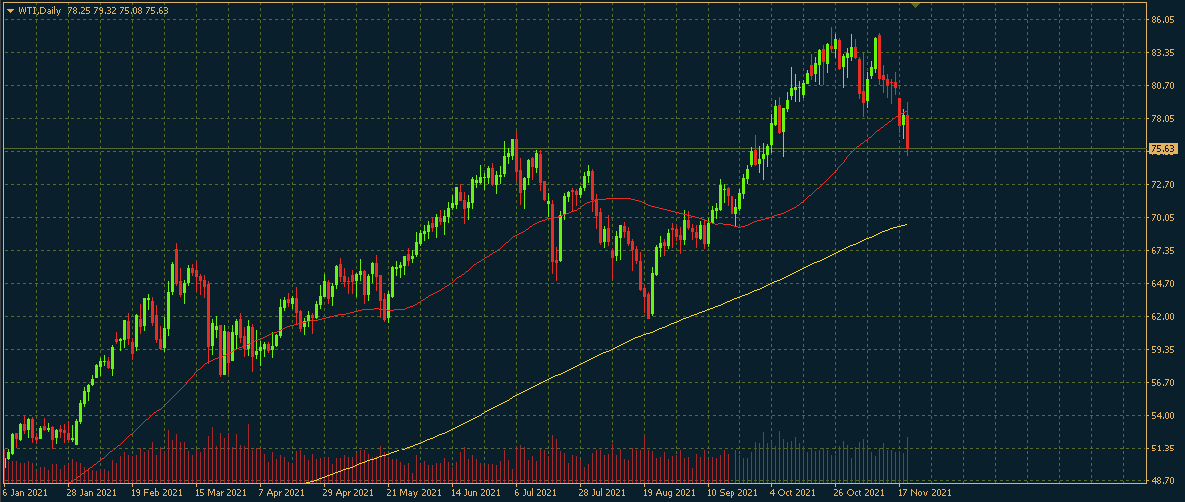
Gold 1845,805
|
EURUSD 1,1275
|
DJIA 35659,50
|
OIL.WTI 75,795
|
DAX 16144,95
|
|---|
The double-top reversal pattern on the WTI chart has been triggered. The support for the pattern has been broken and the technical landmarks have been updated. Where to catch the price now and how long can the downtrend last?
OIL.WTI

The double top, which was assumed to be in the $79-$85/bbl range for WTI, is complete and its support has been broken. The price did not leave to draw a third top, and there are fundamental reasons for this.
The technical downside potential is now measured by the height of the reversal pattern. And if you consider the nearby support levels, the first target for easing will be near $73.
What’s next? Given the floating support line SMA200 (yellow indicator line), if it breaks the level of $73 per barrel, the WTI could fall to $70. There is also a strong technical and psychological level there.
This scenario suggests a reversal to a correction within a broad uptrend. A change in the long-term trend can be talked about when the SMA200 floating trend line and the horizontal support of $70/bbl are fixed below it. However, this is unlikely to happen.
Now let’s look at the fundamental background. One of the downside drivers remains the fear that US President Joe Biden’s administration might release oil from the country’s Strategic Petroleum Reserve to lower prices. And this is an expansion of supply.
Meanwhile, demand concerns have emerged in the market. An increase in the number of new cases of coronavirus in eurozone countries could lead to a slowdown in economic recovery.
Austria was the first in Western Europe to impose a full lockdown amid a new wave of the pandemic. Germany, the eurozone’s largest economy, has also warned of a possible move towards full lockdown.
Such a prospect threatens to reduce energy demand and, along with expanding supply, put serious pressure on prices. Although this is now predominantly on the expectation factor.
In this case, on the facts the decline risks intensifying. The blocking situation is unlikely to be short-term and is likely to last for at least a month. During this time WTI could well go down to $70/bbl.
02.30 People’s Bank of China benchmark lending rate
16.00 US secondary housing market sales for October
Important Notes on This Publication:
The content of this publication is for general information purposes only. In this context, it is neither an individual investment recommendation or advice nor an offer to purchase or sell securities or other financial products. The content in question and all the information contained therein do not in any way replace individual investor- or investment-oriented advice. No reliable forecast or indication for the future is possible with respect to any presentation or information on the present or past performance of the relevant underlying assets. All information and data presented in this publication are based on reliable sources. However, Bernstein Bank does not guarantee that the information and data contained in this publication is up-to-date, correct and complete. Securities traded on the financial markets are subject to price fluctuations. A contract for difference (CFD) is also a financial instrument with leverage effect. Against this backdrop, CFD trading involves a high risk up to the point of total loss and may not be suitable for all investors. Therefore, make sure that you have fully understood all the correlating risks. If necessary, ask for independent advice.
